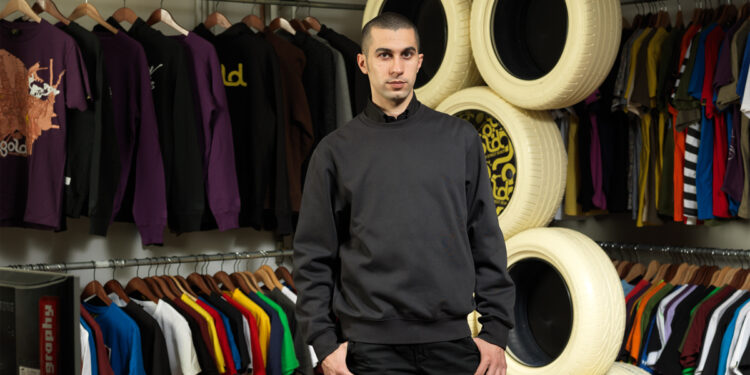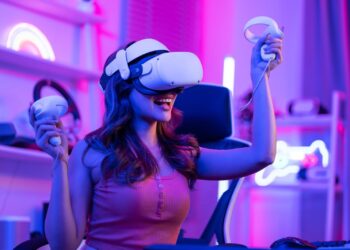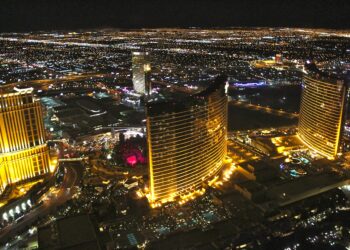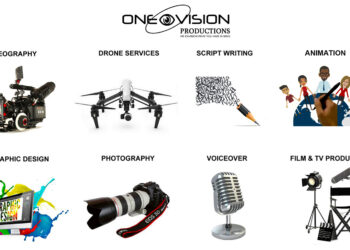Why should an artist use virtual reality? We asked Omar Rashid, film producer and VR pioneer in the entertainment industry
Why should an artist use virtual reality? What are the new technologies that best “lend themselves” to the art world? And above all: what does the public think? We asked Omar Rashid, an Italian-Iraqi designer and videomaker with a past as a writer. In 2016, together with Elio Germano, he made NoBorders VR, the first Italian documentary to use virtual reality, and in these months he’s bringing around Italy Segnale d’allarme, VR transposition of a “traditional” play. Omar is a true pioneer of virtual reality in our country. And he approached this technology thanks to a porn.
Read also —> At Monet’s house: an Augmented Reality tour to discover the secrets of the painter
Art and VR: Interview with Omar Rashid
How did you come to the world of VR?
I went through art and fashion studies but my background is strongly marked by hip-hop culture and the graffiti world. My first work experience was in New York in a skaters clothing company. In 2002, for “anagraphic” reasons, I was not able to obtain a work visa: let’s say that it was not the best historical moment to be the son of an Iraqi in New York! I returned to Florence with the aim of creating a reality that would be a melting pot of all the experiences I had had up until then. I created the brand Gold and I opened a sneakers store but then slowly I realized that it was better to focus my energies on communication and storytelling.
What is your approach with new technologies?
With technology I’ve always had an approach very influenced by my past as a writer. I don’t have space to communicate? I create it! I don’t have a budget? I use technology in an unconventional way. I started using virtual reality with this very spirit, in 2013, when together with Giovanni Landi I created Gold AR to promote my brand. It is a smartphone app that uses virtual reality to transform the environment around us into a 360-degree shooter: once framed, Gold’s stickers come alive and start moving like a snake. The goal is to shoot to hit it. Almost as a joke I sent the project to the Auggie Awards, the virtual expo that every year gives an award to the best augmented reality software, programs and apps. And Gold AR won the award for the best marketing campaign based on augmented reality, beating giants like Pepsi, Ikea, Absolut Vodka and Wall Mart in collaboration with Marvel: we are very proud to have beaten even the Avengers!
The next step was the production of audiovisual content?
My passions have always been high-tech and audiovisual. I’m super freaky and as soon as a new tech gadget comes out I have to have it. It went the same way with the first VK2 viewers in 2014. One of the first things I saw in augmented reality was porn. My reaction was, can you really make videos like that with this stuff? Soon after, I bought the Oculus Gear VR and a set of GoPro cameras to make my first augmented reality videos. Don’t worry, they weren’t porn! The very first footage I showed to some friends. Among them was actor Elio Germano who, after a moment of bewilderment, asked me to make something together!
In 2016, VR was a completely new technology: how was it to write the rules of this “new” audiovisual language?
The first important project I developed with VR was No Borders (directed by Haider Rashid, ed.) the first Italian documentary in virtual reality shot at 360°. Elio is the protagonist and investigates the migrant crisis in Italy. The film moves between the Baobab Center in Rome and the No Borders garrison in Ventimiglia, a city on the border with France which, at that time, had become the symbol of the migrant emergency. Virtual reality allows the viewer to immerse himself in the scene by exploring it at 360 degrees. In No Borders you live spaces, moments of the day, you listen to stories and experiences that involve the volunteers. Virtual reality leads to be part of a cross-section that affects everyone’s life more and more every day.
What are your upcoming projects?
I’m working on several projects experimenting with the language of VR. Recently came out The Italian Baba – My Cave in India: a virtual journey in search of oneself. The viewer is immersed in the distant Indian landscapes in search of a guide, a guru. We make an inner journey through the words of the text Barefoot on Earth by Folco Terzani, of which Elio Germano is the narrator. The Italian Baba is an example of how virtual reality can be the tool that allows us to taste and see places with our own eyes and at the same time with the eyes of someone who is not us. A 360° journey that speaks of lives lived and yet to be explored. In October (2019) I was in China to speak about audiovisual production at the World Conference on VR Industry and on November 1 I launched a project dedicated to my city. It is a solo video about Florence that, in the middle, changes and gives birth to a broader reflection on the history and fate of art in the society of the future: all with the support of VR!
Omar Rashid was born in Iraq and grew up in Florence. He finished his studies at Polimoda in Florence in 2002 and, after some experience as a clothing designer between Paris and New York, he created his own streetwear line and used unconventional channels to make it known. The passion for new languages and their application becomes the central element of his career. In 2013 he created Gold AR, an augmented reality app winner of the Auggie Award as "Best Augmented Reality-based Marketing Campaign". In 2016, together with Elio Germano, he realized NoBorders VR, the first Italian documentary that uses virtual reality, winner of the MiBACT "Migrarti" award at the Venice Film Festival. Today with his agency Gold Enterprise he realizes VR projects, in parallel he teaches viral marketing and web communication at IED in Florence.
Read also —> Virtual Reality: you can visit Trajan’s Market in Rome from the couch at home

































